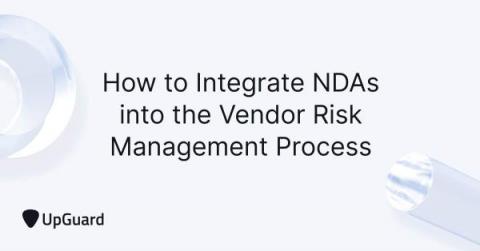Security | Threat Detection | Cyberattacks | DevSecOps | Compliance
Risk Management
Optimize and Automate
Key Cybersecurity KPIs to Report to the Board
Enable Faster Business Growth
Measuring Cyber Hygiene
How to Integrate NDAs into the Vendor Risk Management Process
During the Vendor Risk Management process, information is in constant flux. From risk assessments to risk remediation processes, communication involving sensitive security control data continuously flows between an organization and its monitored vendors. If intercepted, this information stream could be used as open source intelligence for a third-party data breach campaign, nullifying the very efforts a VRM program is trying to mitigate.
Reducing Supply Chain Security Risks with Vendor Segmentation
The vulnerabilities perforating the global supply chain have remained dormant for many years. But the violent disruptions of the pandemic finally pushed these risks to the surface, revealing the detrimental impacts of their exploitation to the world.
How to Build a Culture of Urgency
What is Cyber Vendor Risk Management? Cyber VRM Explained
Cyber VRM is the practice of identifying, assessing, and remediating the cybersecurity risks of third-party vendors. This involves combining objective, quantifiable data sources like security ratings and data leak detection with subjective qualitative data sources like security questionnaires and other security evidence to get a complete view of your third-party vendors’ security posture. A Cyber VRM solution facilitates this practice.
4 Ways Tech Companies Can Better Manage Vendor Risks in 2022
The technology industry is at the forefront of digital transformation, enabling all other industries to achieve greater operational capabilities and connectivity through innovative solutions. Tech companies, such as SaaS vendors, provide crucial software infrastructure to hundreds or even thousands of other organizations. These vendors access, store and transmit large volumes of sensitive information, including valuable healthcare and finance data.











